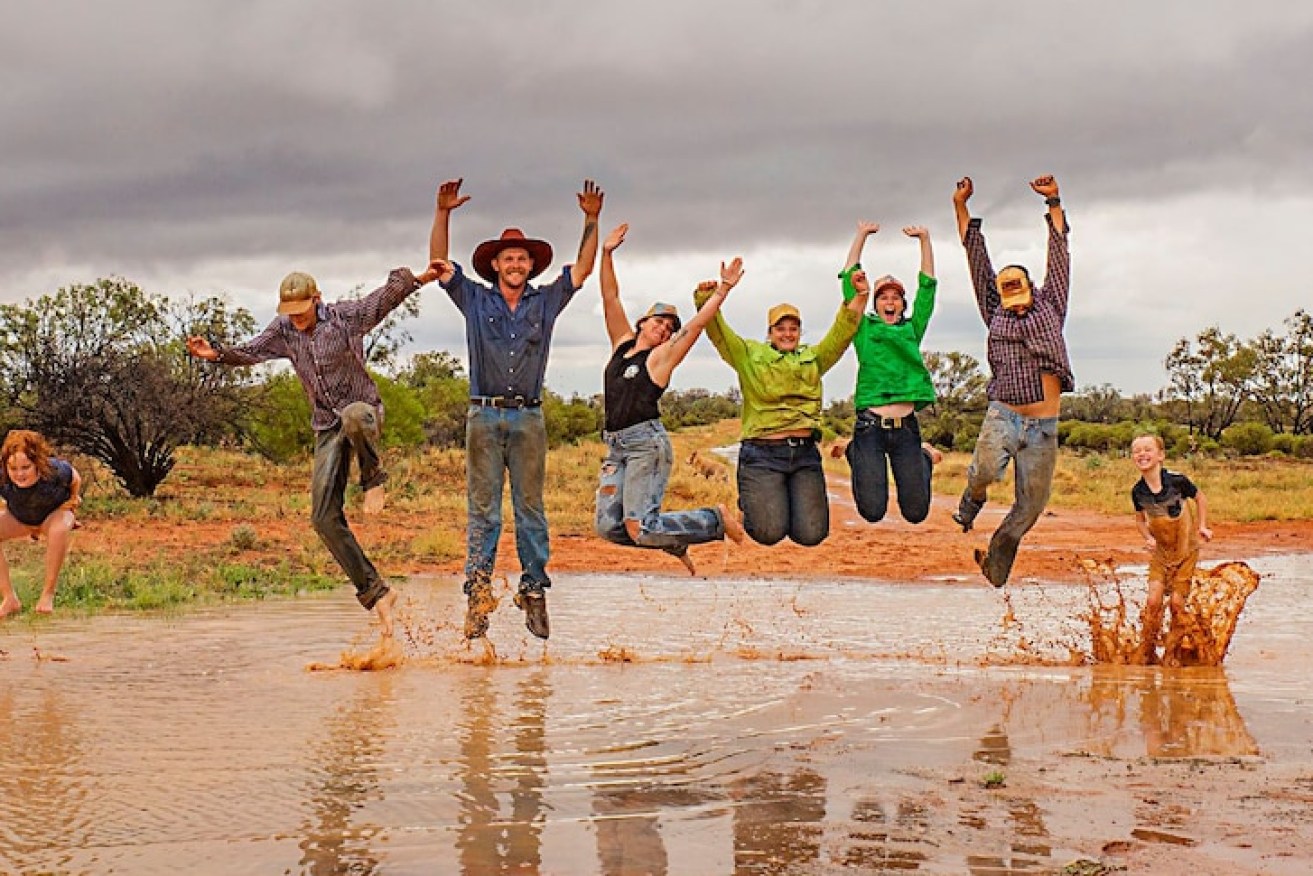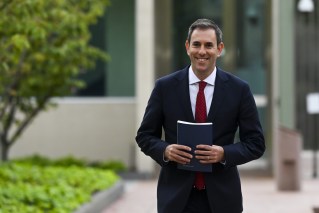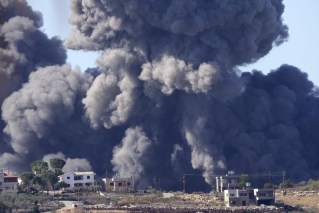Soak this up, drought finally over for most of Queensland – just in time for El Nino
Stubborn drought conditions that have traumatised some parts of Queensland for more than a decade have been declared over.


Pictured from 2021, farming families rejoice as rain drenches properties at Bulloo Downs near Thargomindah.(Supplied: Mazzle Dazzle Photography)
The grip of the big dry, which started to creep across the state from about 2013 is continuing to loosen its grip on Queensland, with only 27.8 per cent of the state classified as drought declared, dropping 10.3 per cent since late last year.
It is the first time since 2013 that less than 30 per cent of Queensland will be drought-declared.
Rockhampton, Central Highlands, Woorabinda, Barcoo and more than half of Barcaldine in the state’s central-west are the latest local government areas to have their drought status revoked.
It’s the first time since 2013 that Barcoo and the eastern part of Barcaldine have been drought-free, while Rockhampton, the Central Highlands and Woorabinda have been drought-declared since 2019.
Barcaldine Mayor Sean Dillon, also a beef producer in the district, said he hadn’t seen country throughout the region looking better and agreed with the local drought committee’s assessment as “right on the money”.
“In 40 years I’ve never seen the country around here looking better than it is right now,” he said.
“The density and ground covering of grass is as close as you’ll get to 100 per cent in this part of the world. It’s a rich, deep green and there’s still plenty of surface water about. It’s the compounding effect of two fantastic wet seasons back to back.”
Dillion said that while the country had recovered, the improved conditions also spelled more confidence among livestock producers and optimism across the community more broadly.
“The condition of cattle is reflective of what’s going on in the paddocks,” he said.
“And right now those cattle are fat and happy. I just finished branding a couple of hundred calves this morning and I haven’t seen the branding cradle look more full.
“We’ve got cattle now that have never known anything but good seasons, being born on country at its prime, so 18 month to two-year old steers will be emerging from this district with weight gain and exhibiting weight-for-age at a level that would be the best I think this place has ever produced.”
Agriculture Minister Mark Furner said increased rainfall had been great news for Queensland primary producers, and wouldn’t rule out further drops in drought declarations as more local drought committees (LDCs) assessed conditions further going into autumn.
“LDCs in the remaining drought-declared areas are still monitoring pasture recovery as the end of the wet season approaches,” he said.
Furner said primary producers no longer needed to be in a drought-declared area to access assistance.
“Primary producers in drought-revoked areas can access freight subsidies for restocking and returning from agistment under the Drought Relief Assistance Scheme (DRAS),” he said.
“If a producer believes they are still experiencing difficult conditions in a council area that is no longer drought declared, they can apply for an Individually Droughted Property (IDP) declaration. This will continue to give them the same access to drought assistance as a current area declaration.”








